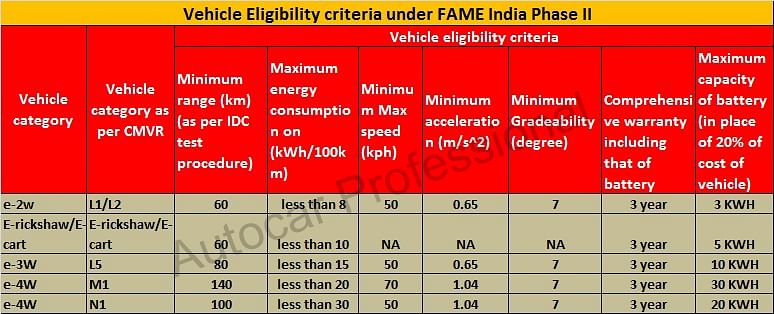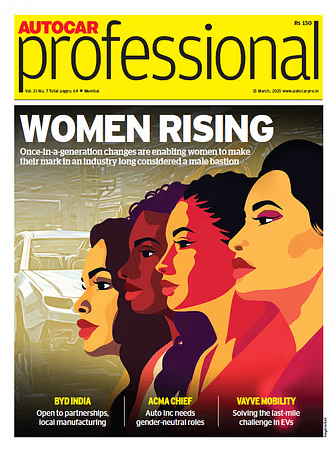Government outlines criteria for EV subsidy, battery capacity replaces 20% vehicle cost cap
Latest update of FAME II Scheme sees vehicle range, speed and max battery capacity being defined; details maximum EV battery capacity across vehicle segments which replaces earlier cap of 20% vehicle cost subsidy.
The government of India is looking to reaffirm plans to motivate efficiency in the electric vehicle ecosystem under the recently announced Rs 10,000 crore FAME II policy.
In what looks to be a planned follow-up on the vehicle eligibility criteria, the government has now come out with requirements for electric two-wheeler, e-rickshaw, e-three wheeler, e-passenger vehicle and e-four-wheeler (pick-up trucks).
On March 1, 2019, the government of India finally outlined and announced the details of the second phase of the much-awaited electric vehicle promotion/adoption policy. For vehicles to avail subsidy under the scheme, the criteria limited the maximum cap on all categories (except buses) to 20 percent of the cost of the vehicle.
This, the industry believed, would translate into benefits for the consumer who has to contend with overpriced EVs. To resolve this, the government has proposed that for electric vehicles sold in India will need to adhere to the minimum specification in terms of range, speed, energy consumption, acceleration, warranty and the maximum capacity of battery criteria (which replaces 20% cost of the vehicle cap), to ensure that the industry focuses more on efficiency, instead of fixing a higher price to pass on the benefits to the consumer. In addition, all EVs will need to come equipped with regenerative braking system and a stop-start system.
While it is yet not clear if private consumers for electric four-wheelers will benefit from the second phase of the policy, the constant revision by the government seems to indicate the focus on developing and taking care of the overall EV ecosystem with a heightened focus on commercial application.

Any vehicle that is registered as state carriage, the maximum energy consumption will be 1.5 times than mentioned above.
RELATED ARTICLES
Rajiv Bajaj reappointed MD and CEO of Bajaj Auto for five-year term
Bajaj Auto’s Board of Directors has approved the re-appointment of Rajiv Bajaj as the company’s MD and CEO for another f...
JSW MG Motor launches Comet EV Blackstorm edition
The key highlights of the Comet EV Blackstorm, which is now the top-end variant, are its ‘Starry Black’ exterior along w...
Maruti Suzuki begins production at new Kharkhoda plant
Phase 1 of the Kharkhoda plant will have an annual production capacity of 250,000 units and produce the Brezza compact S...






 By Autocar Professional Bureau
By Autocar Professional Bureau
 19 Mar 2019
19 Mar 2019
 13490 Views
13490 Views








 Ajit Dalvi
Ajit Dalvi

